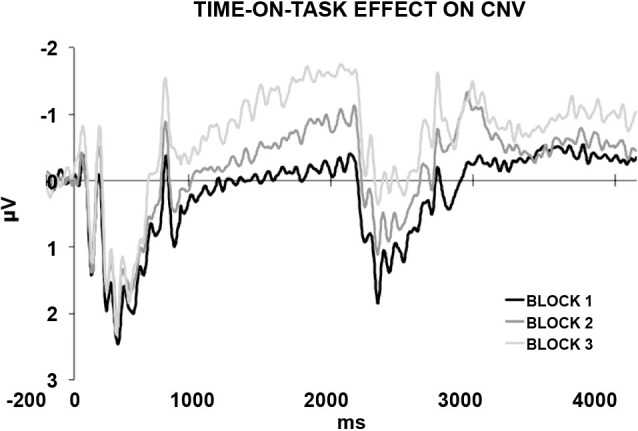Figure 2.

The passive CNV. The generation of a temporal S1–S2 contingency rule instantiates an automatic temporal expectancy. This in turn results in the elicitation of a passive CNV peaking at the expected S2 time point, corresponding to approximately 2000 ms from the onset of the stimulus, that is, S1 (500 ms) + standard ISI (1500 ms). The standard ISI-related ERP activity is plotted separately for the first, second, and third block. The progressive increases in amplitude and steepness reveals a time-on-task effect. This suggests that participants learnt the temporal structure progressively, discovering the temporal contingency between S1 and S2 on a trial-by-trial basis.
